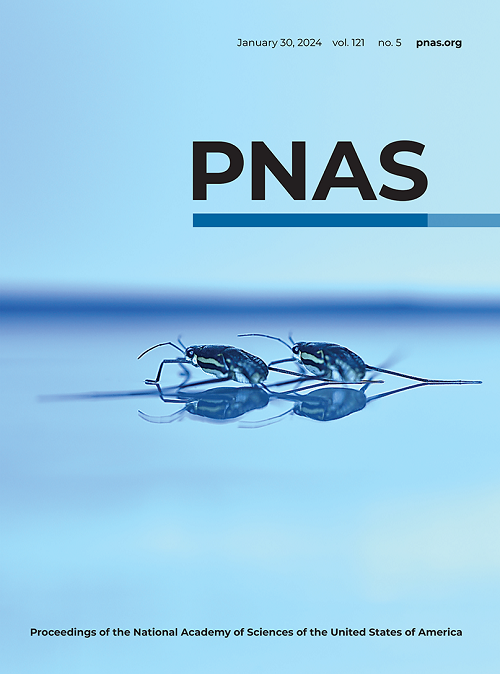Regulatory mimicry of cyclin-dependent kinases by a conserved herpesvirus protein kinase
IF 9.1
1区 综合性期刊
Q1 MULTIDISCIPLINARY SCIENCES
Proceedings of the National Academy of Sciences of the United States of America
Pub Date : 2025-04-16
DOI:10.1073/pnas.2500264122
引用次数: 0
Abstract
Herpesviruses encode conserved protein kinases (CHPKs) that target cellular cyclin-dependent kinase (CDK) phosphorylation sites; thus, they are termed viral CDK-like kinases. Tyrosine 15 in the GxGxxG motifs of CDK1 and CDK2, whose phosphorylation down-regulates their catalytic activities, is conserved in the corresponding motifs of CHPKs. We found that CHPK UL13, the corresponding Tyr-162 in herpes simplex virus 2 (HSV-2), was phosphorylated in HSV-2-infected cells. Mutational analyses of HSV-2 UL13 Tyr-162 suggested that phosphorylation of UL13 Tyr-162 reduced the phosphorylation of all UL13 substrates tested in HSV-2-infected cells. These findings suggested that HSV-2 UL13 mimicked the regulatory mechanism of CDKs and that this CHPK has regulatory and functional mimicry with CDKs. Furthermore, phosphorylation of HSV-2 UL13 Tyr-162 was suggested to be required for the downregulation of viral replication and pathogenicity, specifically in the brains of mice, and for efficient viral recurrence in guinea pigs. These findings highlight the dual impact of the regulatory mimicry of CDKs by CHPK on the fine-tuned regulation of lytic and latent HSV-2 infections in vivo.一种保守的疱疹病毒蛋白激酶对细胞周期蛋白依赖性激酶的调控模拟
疱疹病毒编码靶向细胞周期蛋白依赖性激酶(CDK)磷酸化位点的保守蛋白激酶(CHPKs);因此,它们被称为病毒cdk样激酶。CDK1和CDK2的GxGxxG基序中的酪氨酸15在CHPKs的相应基序中是保守的,其磷酸化下调了它们的催化活性。我们发现CHPK UL13,即单纯疱疹病毒2 (HSV-2)中对应的Tyr-162,在HSV-2感染的细胞中被磷酸化。对HSV-2 UL13 Tyr-162的突变分析表明,UL13 Tyr-162的磷酸化降低了HSV-2感染细胞中所有UL13底物的磷酸化。这些结果表明,HSV-2 UL13模仿CDKs的调控机制,并且该CHPK具有与CDKs的调控和功能模仿。此外,HSV-2 UL13 Tyr-162的磷酸化被认为是下调病毒复制和致病性(特别是在小鼠大脑中)以及在豚鼠中有效的病毒复发所必需的。这些发现强调了CHPK对CDKs的调控模仿对体内裂解性和潜伏性HSV-2感染的微调调节的双重影响。
本文章由计算机程序翻译,如有差异,请以英文原文为准。
求助全文
约1分钟内获得全文
求助全文
来源期刊
CiteScore
19.00
自引率
0.90%
发文量
3575
审稿时长
2.5 months
期刊介绍:
The Proceedings of the National Academy of Sciences (PNAS), a peer-reviewed journal of the National Academy of Sciences (NAS), serves as an authoritative source for high-impact, original research across the biological, physical, and social sciences. With a global scope, the journal welcomes submissions from researchers worldwide, making it an inclusive platform for advancing scientific knowledge.

 求助内容:
求助内容: 应助结果提醒方式:
应助结果提醒方式:


